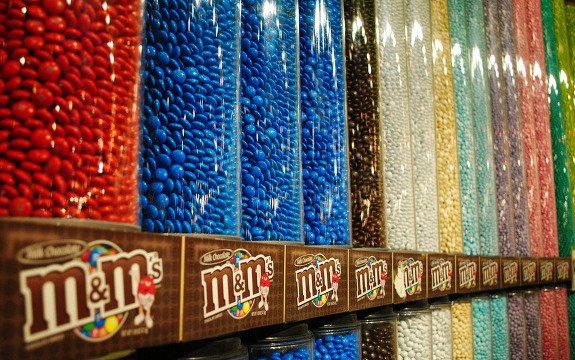Mom Petitions Mars (M&Ms) to Replace Artificial Colors with Natural Colors

 The E.U. is miles ahead of the U.S. in regards to limiting the use of artificial colors in foods. But why? These colors, tied to hyperactivity and a whole host of other health problems, are prominent in foods marketed to the young. Continuing the fight against artificial colors here in the U.S., one New York mother has started a petition asking Mars to replace their artificial colors with natural ones, creating a momentum that we need to collectively accelerate.
The E.U. is miles ahead of the U.S. in regards to limiting the use of artificial colors in foods. But why? These colors, tied to hyperactivity and a whole host of other health problems, are prominent in foods marketed to the young. Continuing the fight against artificial colors here in the U.S., one New York mother has started a petition asking Mars to replace their artificial colors with natural ones, creating a momentum that we need to collectively accelerate.
Renee Shutters is a mom like most others, one who was shocked when she began pulling foods from her cupboards and discovering artificial colors in everything—from macaroni and cheese to chicken tenders and yogurt. It was this discovery and the fact that removing such foods improved her 9 year-old son’s behavior, that led her to start a petition on Change.org.
“In this petition, I’m asking Mars to change to natural colorings,” Shutters told NPR. “It’s very doable.”
Doable indeed. Food makers across Europe have replaced artificial colors with natural ones, particularly in the foods that children eat. These natural colors come from vegetables and other natural sources and don’t come with the behavioral side effects.
So, why hasn’t the U.S. joined the ranks? Natural colors are expensive and they aren’t as vibrant. And if we know anything about the U.S. food industry, it’s that they are all about profit.
The Center for Science in the Public Interest is cosponsoring Shutters’ petition and they say the artificial colors are mass-produced and petroleum-based. Like other harmful and overused food ingredients (high fructose corn syrup for instance), these colors allows food-makers to inject brilliantly bright colors at a fraction of the cost of natural options.
But is food coloring bad for you? Another possible source of resistance among food makers is that there isn’t much consensus on the effects of these artificial food colors. While research has linked them to hyperactivity and other poor health outcomes, there are also a few studies that say they are completely safe, and it’s these latter studies that food makers believe.
Still, there is a glimmer of hope. Mars recently won FDA approval for spirulina extract—a plant-based coloring agent that could be used to color blue M&M’s. While they say they are aware of the petition and don’t make any verbal acknowledgement of shifting attitudes about artificial colors, their move to get spirulina approved could signal their interest in supporting consumer health over profit margins.
